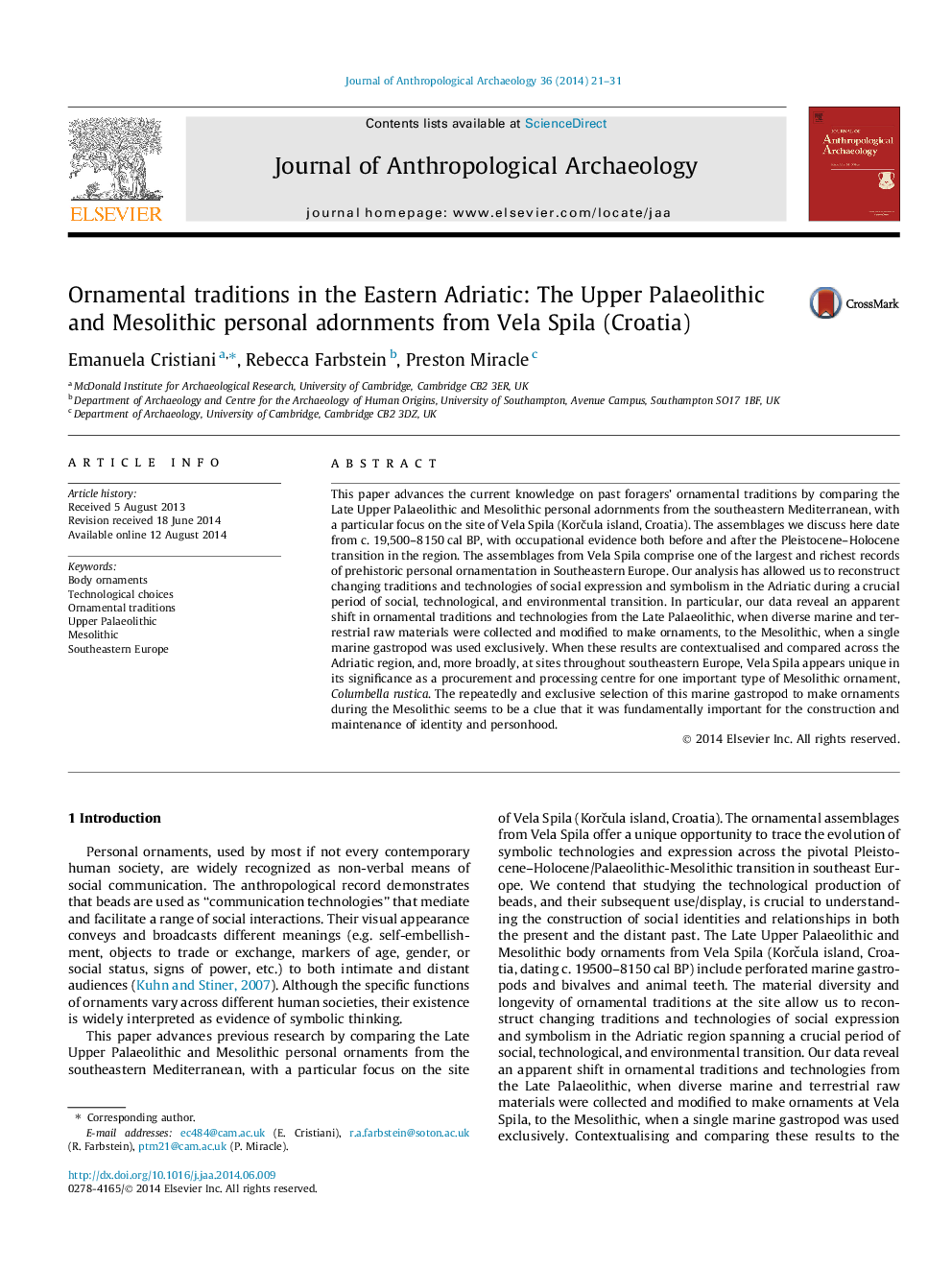| Article ID | Journal | Published Year | Pages | File Type |
|---|---|---|---|---|
| 1034928 | Journal of Anthropological Archaeology | 2014 | 11 Pages |
Abstract
This paper advances the current knowledge on past foragers' ornamental traditions by comparing the Late Upper Palaeolithic and Mesolithic personal adornments from the southeastern Mediterranean, with a particular focus on the site of Vela Spila (KorÄula island, Croatia). The assemblages we discuss here date from c. 19,500-8150Â cal BP, with occupational evidence both before and after the Pleistocene-Holocene transition in the region. The assemblages from Vela Spila comprise one of the largest and richest records of prehistoric personal ornamentation in Southeastern Europe. Our analysis has allowed us to reconstruct changing traditions and technologies of social expression and symbolism in the Adriatic during a crucial period of social, technological, and environmental transition. In particular, our data reveal an apparent shift in ornamental traditions and technologies from the Late Palaeolithic, when diverse marine and terrestrial raw materials were collected and modified to make ornaments, to the Mesolithic, when a single marine gastropod was used exclusively. When these results are contextualised and compared across the Adriatic region, and, more broadly, at sites throughout southeastern Europe, Vela Spila appears unique in its significance as a procurement and processing centre for one important type of Mesolithic ornament, Columbella rustica. The repeatedly and exclusive selection of this marine gastropod to make ornaments during the Mesolithic seems to be a clue that it was fundamentally important for the construction and maintenance of identity and personhood.
Related Topics
Social Sciences and Humanities
Arts and Humanities
History
Authors
Emanuela Cristiani, Rebecca Farbstein, Preston Miracle,
